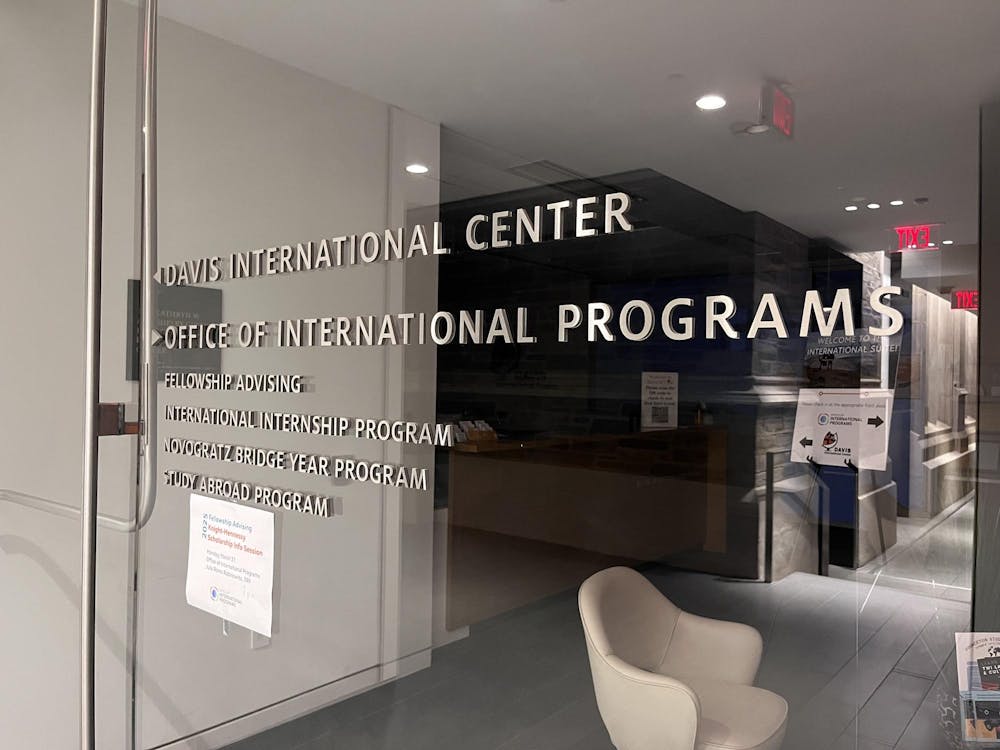The University increased its tuition and fees to $47,020 for the 2009-10 academic year, a jump from $45,695 the year before. Though the cost of attending Princeton is still under the $50,000 mark, 58 universities are already charging more than that, and the University could potentially follow suit in January, when it announces tuition and fees for the 2010-11 academic year.
Several experts on education costs said crossing the $50,000 line is a relatively insignificant psychological factor, especially for prestigious universities, and they questioned the necessity of such increases in light of the financial burden placed on students and their families.
“Many of the most expensive schools have such strong brands that they experience very little price sensitivity,” President of College Parents of America James Boyle said. “Other expensive schools have actually experienced a jump in applications when they raise their sticker price, as if somehow price alone is a determinant of quality.”
David Feldman, an economics professor at The College of William & Mary, compared the idea of a $50,000 barrier to the idea of a firm charging $99.99 instead of $100.
“There may be some brief and transient psychological gain from holding the price under $50,000, but if a bunch of schools were clustered in the $49,000 range last year, I would expect a lot of them to bite the bullet and allow the barrier to slip into the rearview mirror,” he said.
The Chronicle of Higher Education reported that the 58 members of the “$50K club” include Columbia ($51,544), the University of Chicago ($51,078), NYU ($51,993), Wesleyan ($51,432), Vanderbilt ($51,228) and Georgetown ($52,161). Last year, only five schools charged more than $50,000, according to the Chronicle.
College Board senior policy analyst Sandy Baum said that though many students receive financial aid, universities still bring in a lot of extra revenue from families that are able to afford tuition and the increases in cost. She added that it is a common perception that tuition is raised for wealthy families to pay the expenses of those who are less well-off, but the full value of education at an institution like Princeton is still significantly higher than what any student pays.
“All students are getting subsidies,” she explained. “It’s just that students on financial aid are getting larger subsidies than full-pay students.”

Still, Feldman noted that the higher tuition paid by wealthier families can allow a university to charge low-income families less.
“Any school that wants to spend a certain amount per full-time student, and that also wants to admit students who cannot afford to pay full price, must price-discriminate between those who can afford to pay top dollar and those who cannot,” he explained. “Private universities price-discriminate much more than public universities, but both are doing it more heavily than in the past.”
Feldman, who studies cost increases in higher education, added that though many people believe university costs are driven by “waste, fraud and abuse,” increases of cost are largely beyond the control of any school or any simple government policy.
“The first is the standard problem of ‘cost disease’ that tends to make all services ... more expensive over time,” Feldman said, explaining that industries using highly educated labor must pay soaring wages, and that technology enhancing the quality of higher education has also helped to drive up costs as well.

Feldman explained that institutions must either raise tuition or allow the quality of the education they provide to suffer when their subsidies, whether from endowments or the government, decrease.
But Baum questioned the necessity of the services on which expensive universities spend their money.
“It is definitely true that schools like Princeton are spending much more per student than they did a few years ago,” she said. “You can debate whether you should have so many majors to choose from and whether your classes should be bigger, whether the dorms should not be so fancy, whether you should stop competing with Harvard for the most eminent scholars etc. It’s very expensive to provide what Princeton students are getting.”







